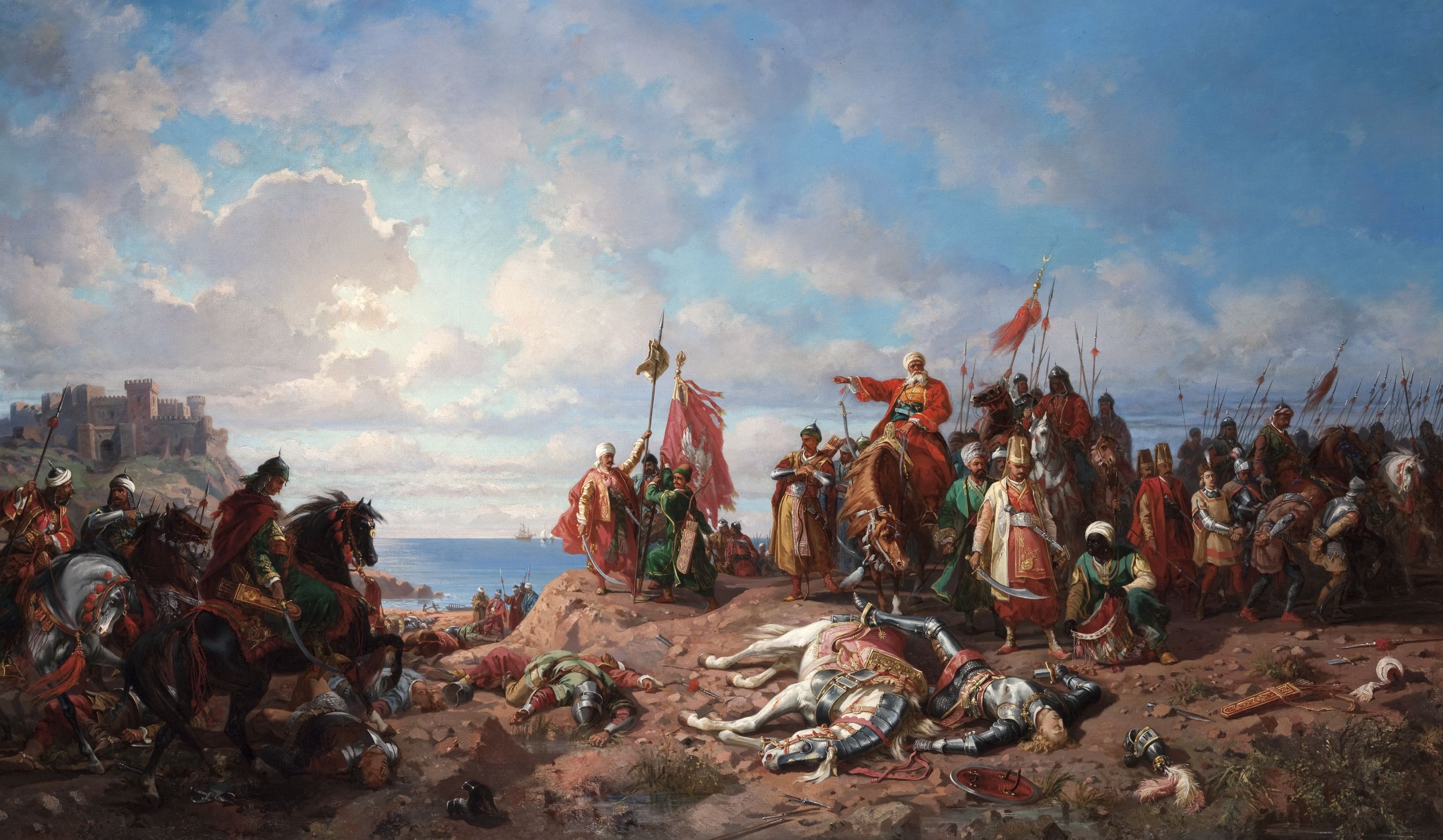02 January 2015

“The Battle of Varna”, Stanisław Chlebowski, 1865-1875. Oil on canvas, 112 X 190 cm.
Over the years of 1864 through 1876, Stanisław Chlebowski served Sultan Abdülaziz in Istanbul as his court painter. As it was, Abdülaziz disposed of considerable artistic talents of his own, and he actively involved himself in Chlebowski’s creative process, suggesting ideas for compositions –such as ballistic pieces praising the victories of Turkish arms. This painting is one such piece, devoted to the Battle of Varna on the Black Sea fought on 10 November 1444 between, on the one hand, a Turkish force commanded by sultan Murad II and, on the other, a force of Poles and Hungarians, assisted by various coalition troops, led by the king of Poland and Hungary, Władysław Jagiellończyk (1424-1444), and by the wojewoda of Transylvania, Jan Hunyady (c. 1387-1456). The day was carried by the Ottomans –the Polish king was killed during the battle (earning the byname Warneńczyk –of Varna– in Polish historiography), and the discomfiture of the Christian forces marked an important milestone of the Ottoman expansion and, to a considerable degree, opened the way to Constantinople, which fell to the Turks in 1453.
In his composition, Chlebowski depicted the decisive moment towards the end of the battle, recorded for posterity in an anonymous Turkish text from the 15th century which also describes the death of the Polish king: “in the heart of the accursed king, the temptation of satan gained the upper hand, making him too confident and, vainly believing himself to be a hero, he thought that he alone could scatter the armies and proceeded to strike at their very middle where Sultan Murad stood. But when he reached the first rank, his horse tripped, and he fell head-first. In that place stood two janissaries, one named Koca Hızır who, along with the other knights who were nearby, smote off the head of the accursed king and carried it to Sultan Murad”.
The scene plays out against a seacoast landscape, with a fortress visible far off to the left. At the front of the composition, King Władysław lies on the ground next to his horse; a janissary approaches him with sabre drawn. Sultan Murad observes from horseback, pointing to the document of the peace treaty (broken by the Hungarian side at the behest of the Vatican) pinned on a lance. Behind the sultan, Christian prisoners are being led off to captivity; at the same time, a group of Turkish riders approaches their commander from the left. The whole is rendered in broad, free gestures, with light, unnaturally bright colours; the composition is clear and readily prehensible.
Urszula Kozakowska-Zaucha
Tuesday - Saturday 10:00 - 19:00
Friday 10:00 - 22:00
Sunday 12:00 - 18:00
The museum is closed on Mondays.
On Wednesdays, the students can
visit the museum free of admission.
Full ticket: 300 TL
Discounted: 150 TL
Groups: 200 TL (minimum 10 people)